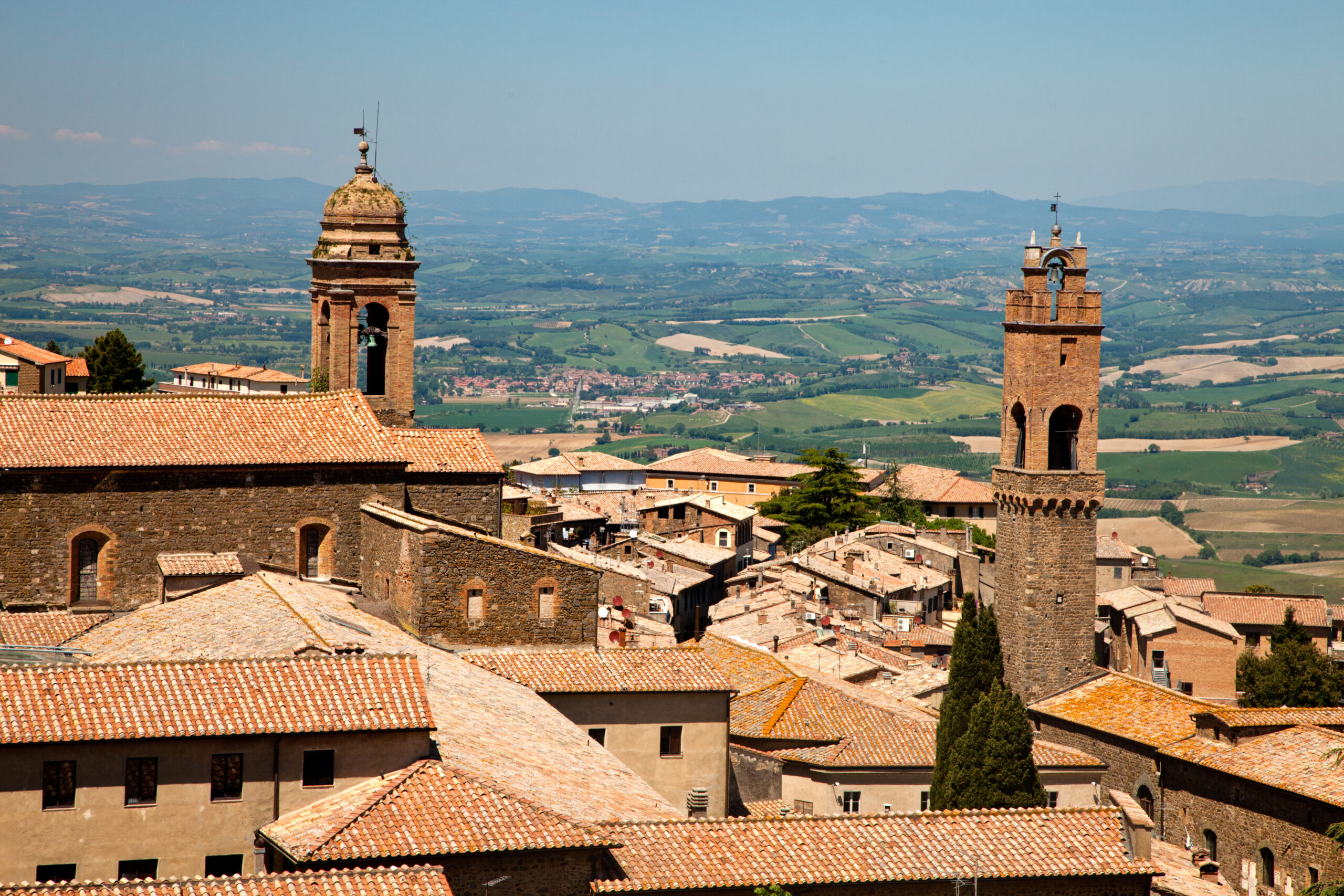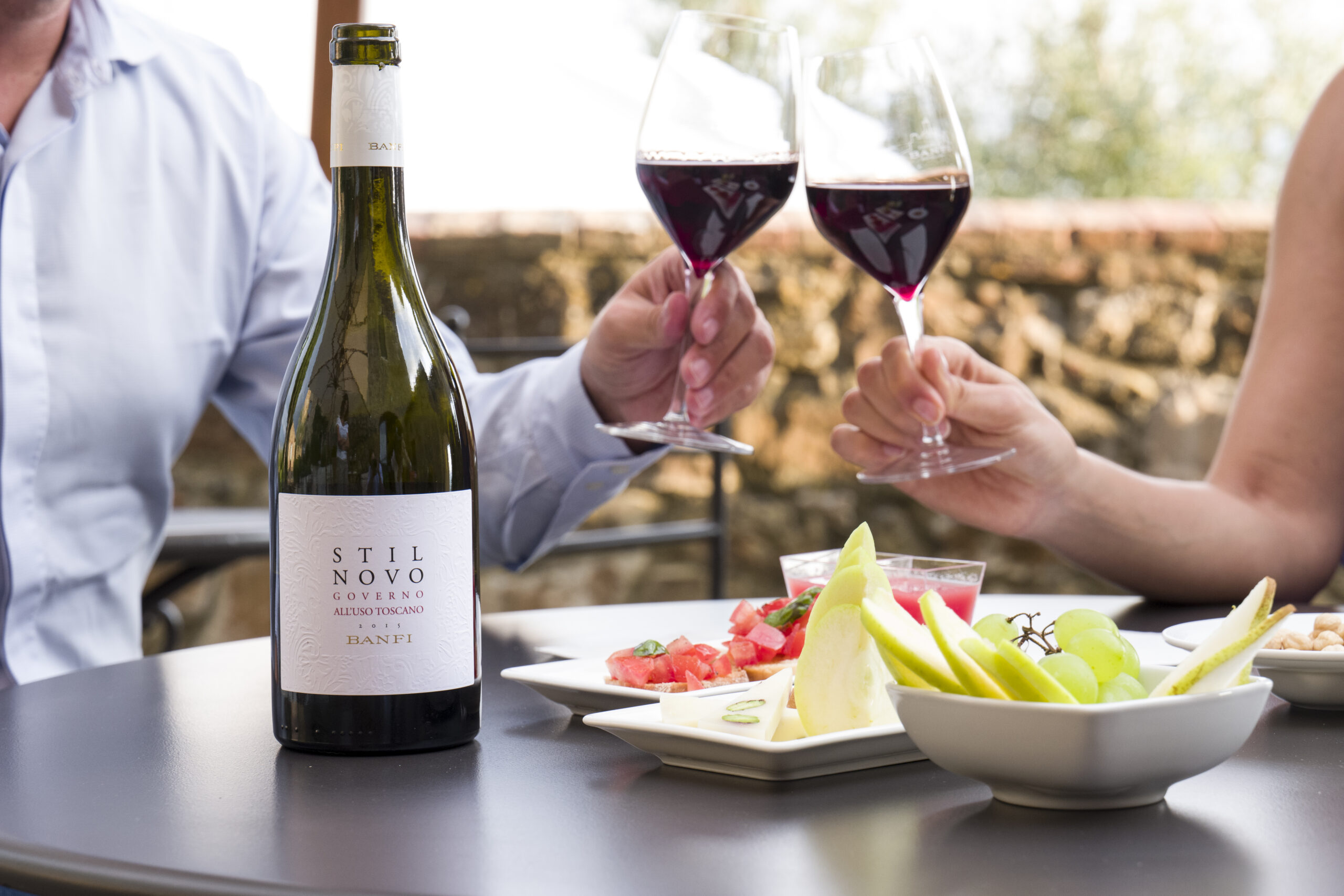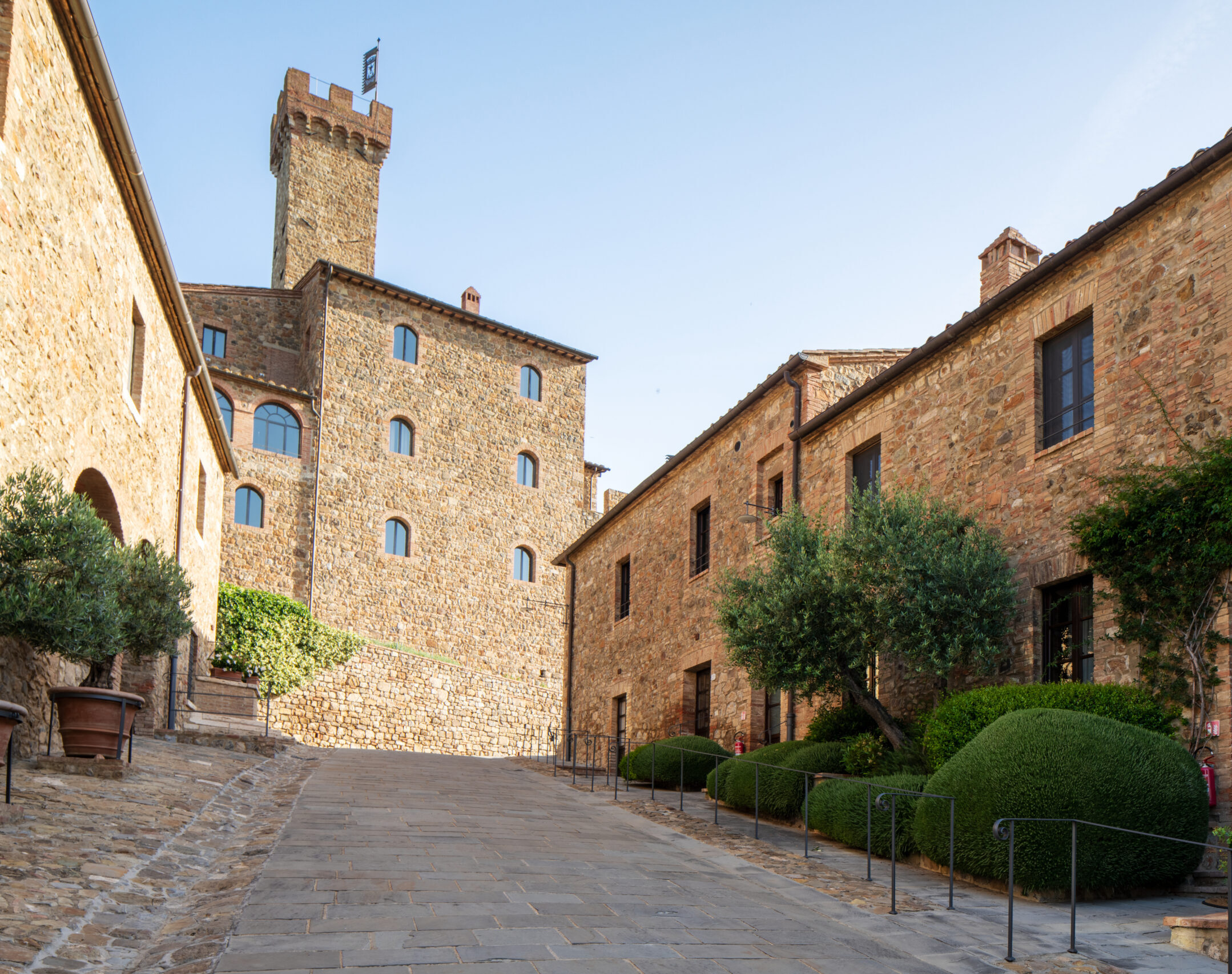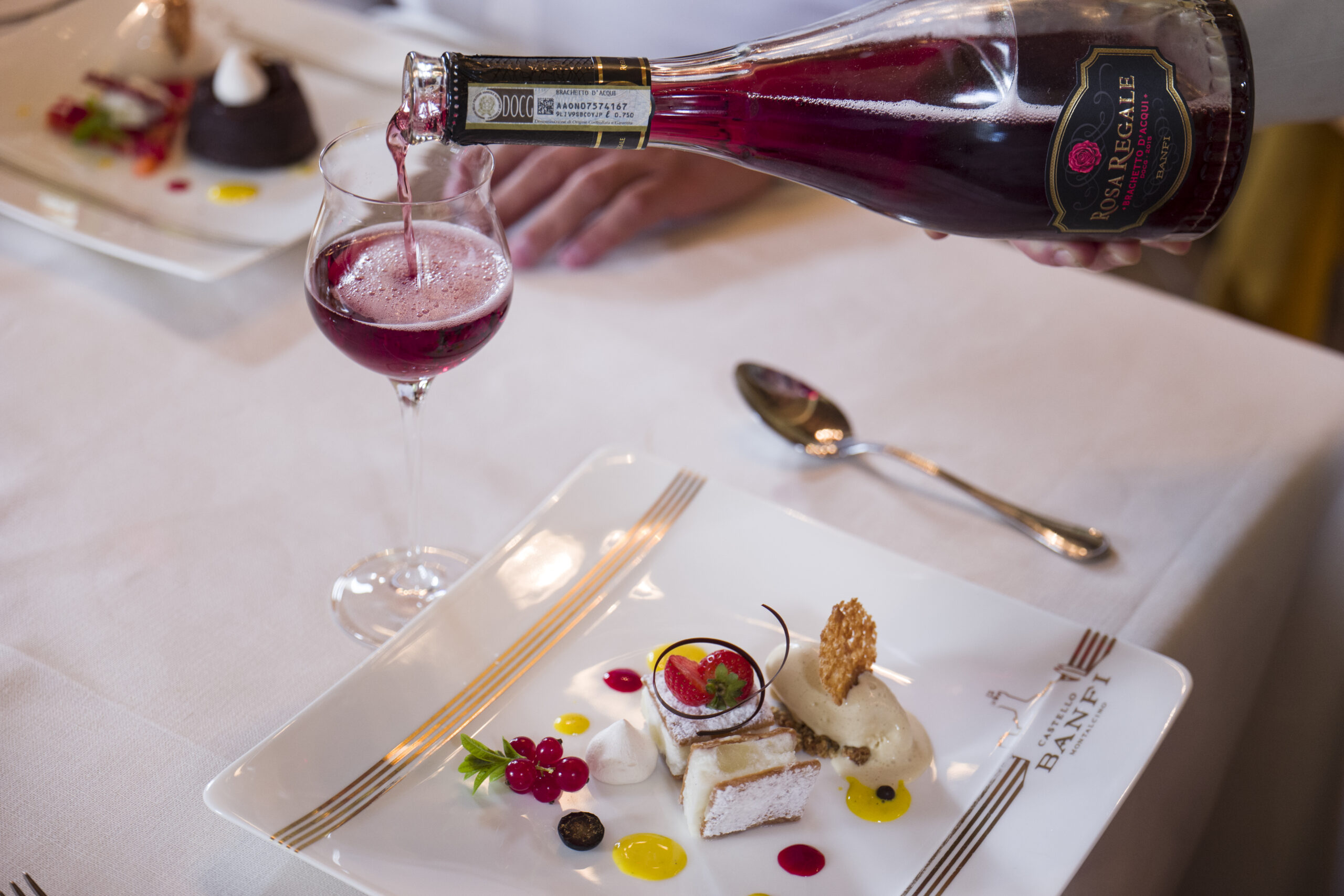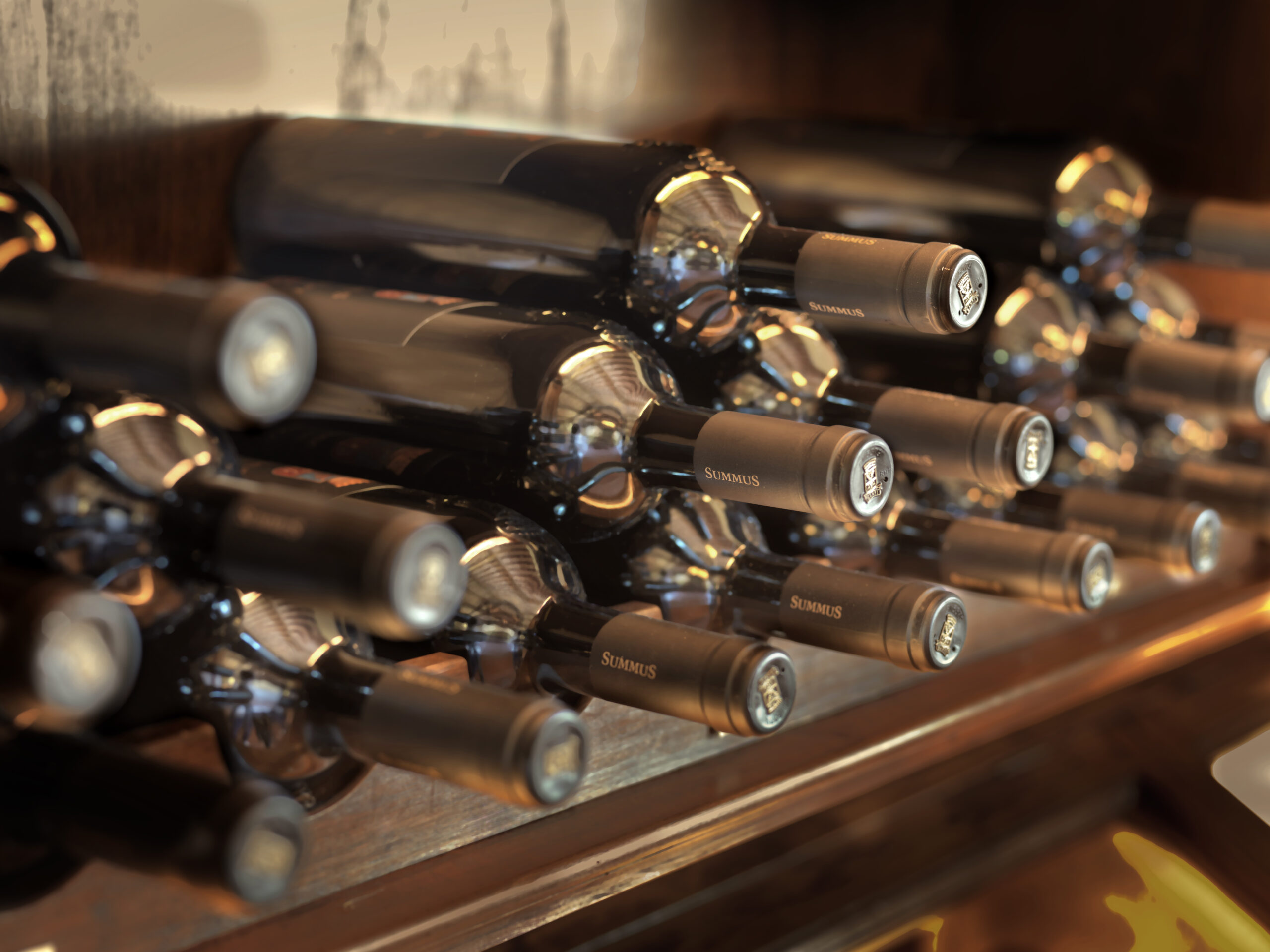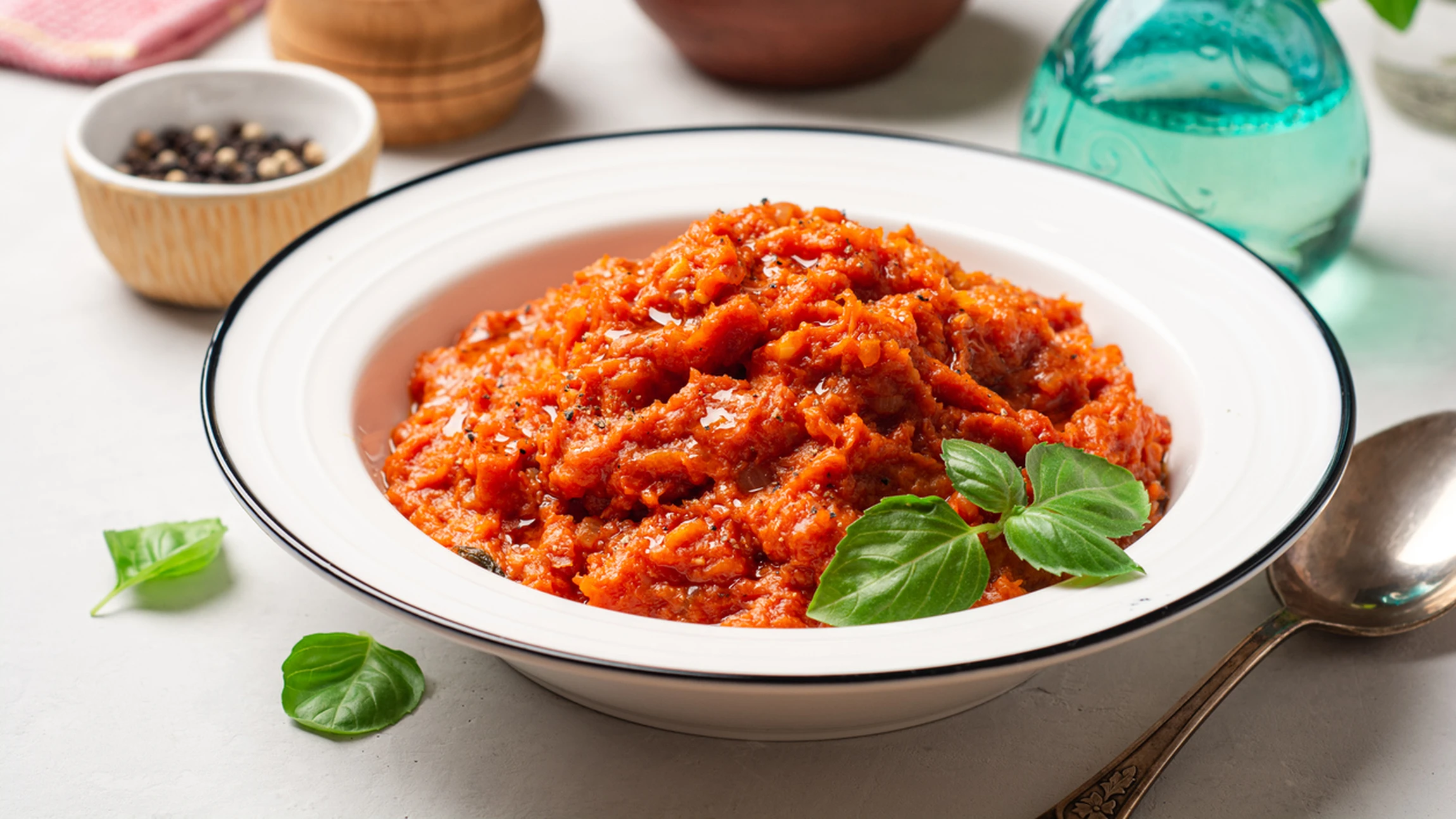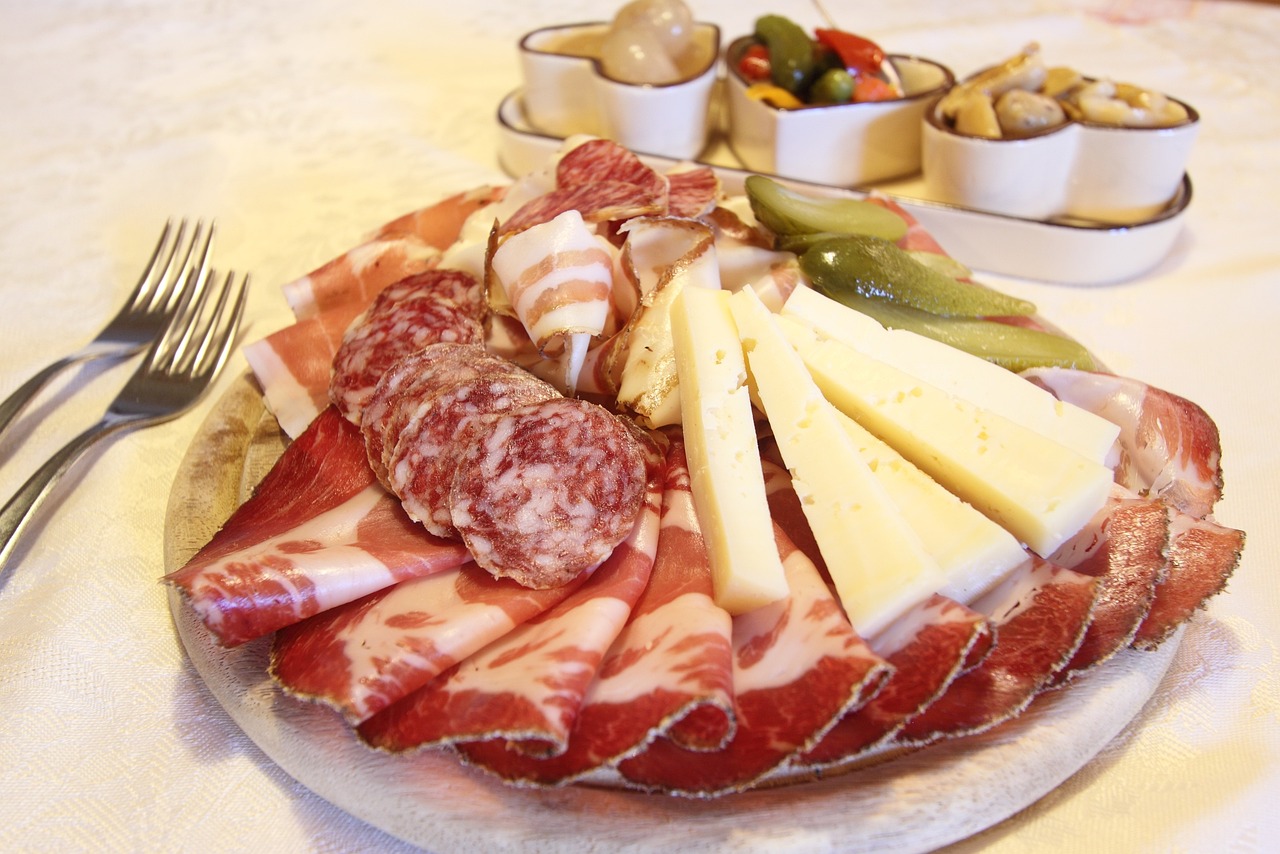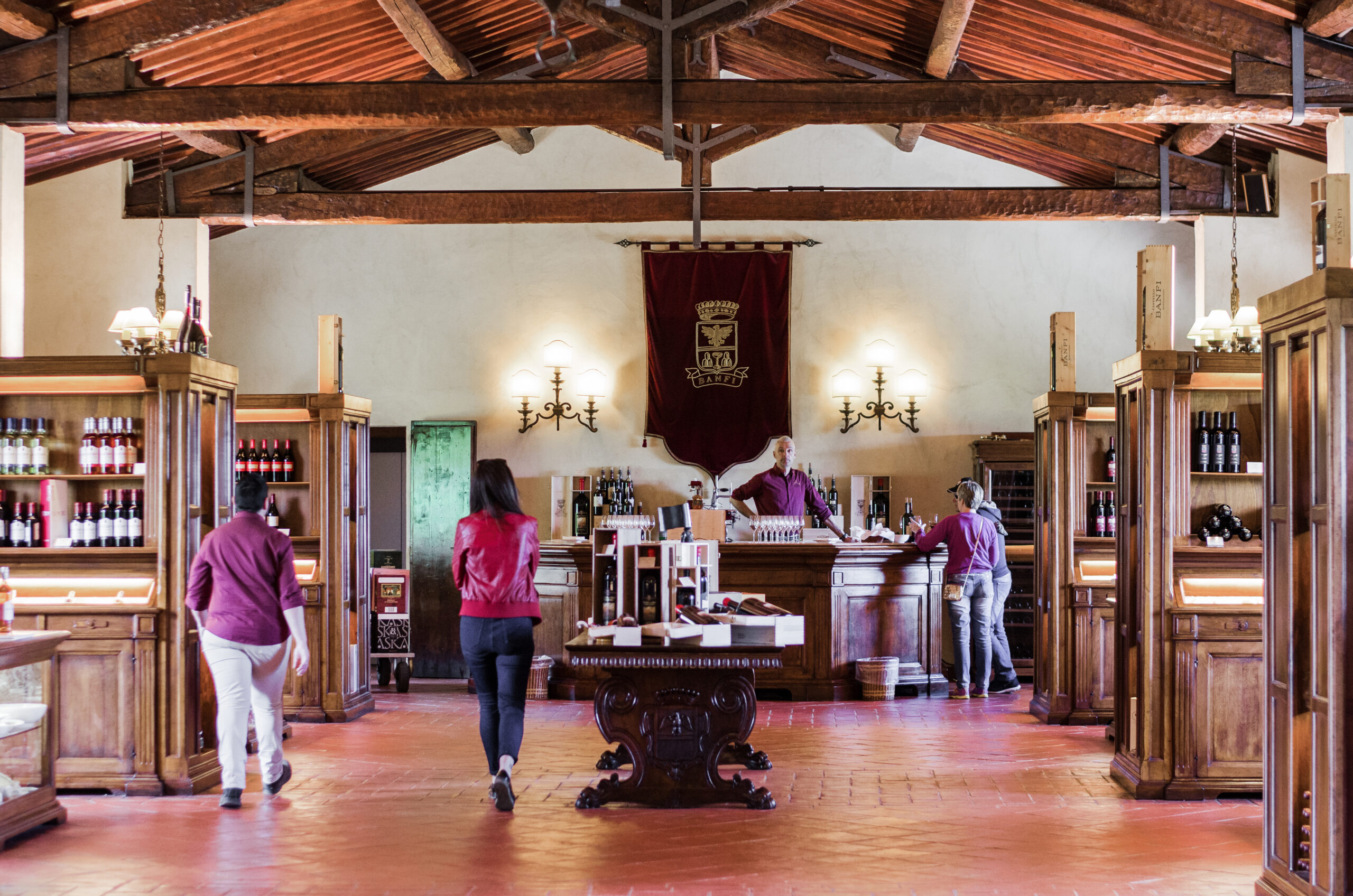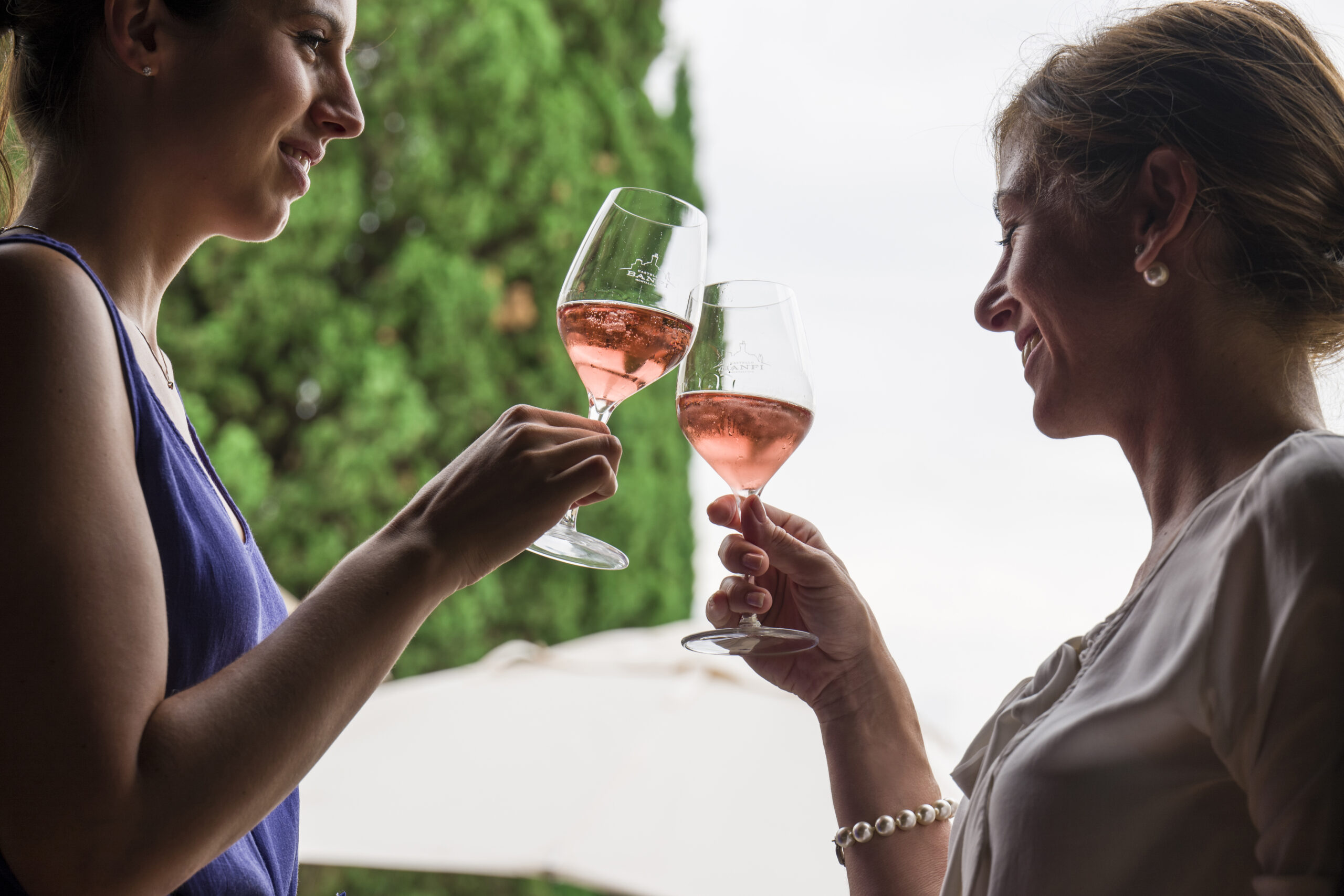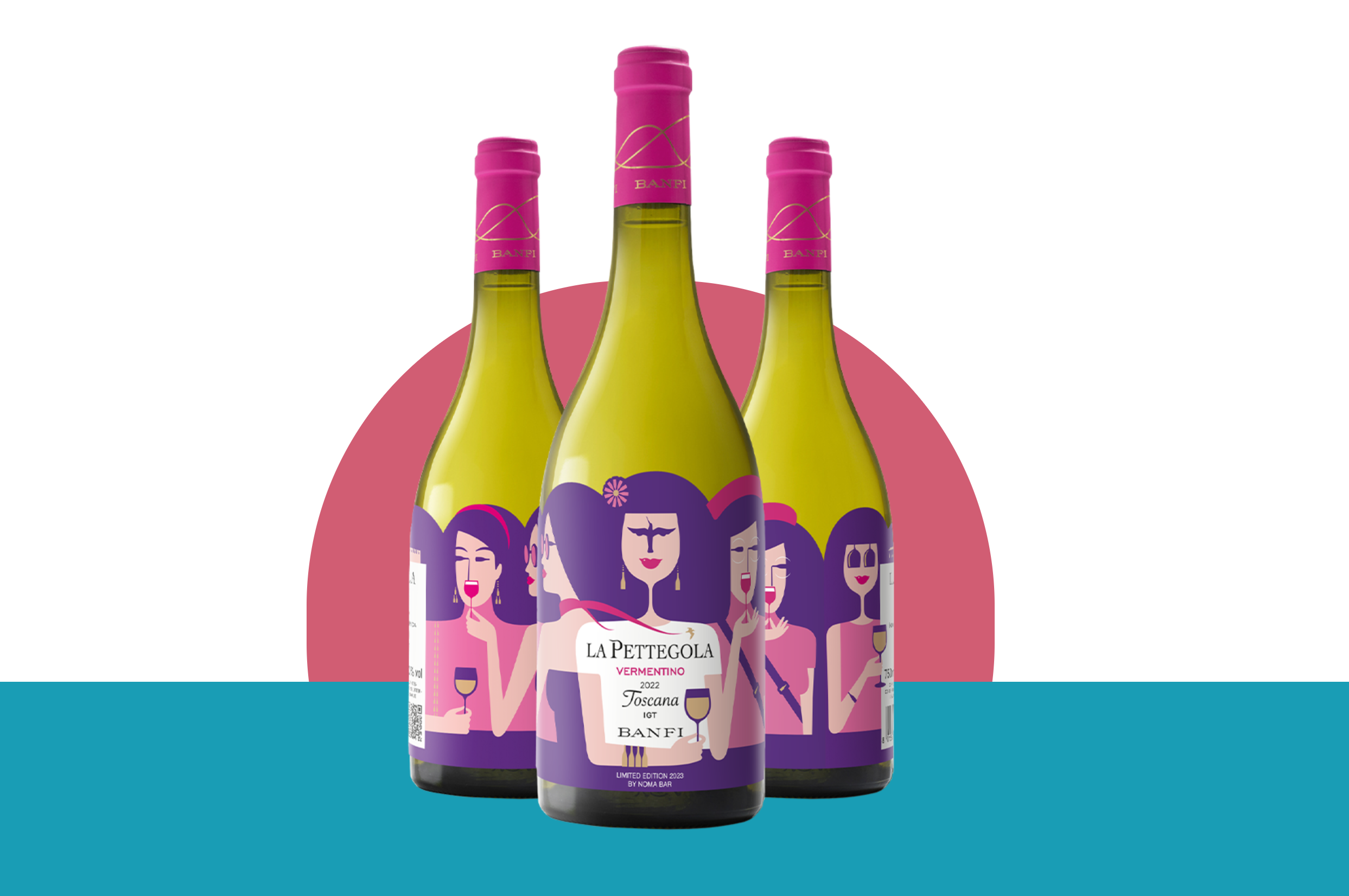What to visit near Montalcino? Discover the most and least tourist attractions near this Tuscan city.
What to see near Montalcino: 10 things to visit
Montalcino, a charming medieval village nestled in the hills of Tuscany, is world-famous for its excellent wines, such as the much-loved Brunello di Montalcino; but in addition to its renowned wine production, the town and its surroundings also offer many other attractions and suggestive places to visit. Here is what to see near Montalcino.
Historic Centre of Montalcino and Fortress
With its thousand-year history, Montalcino enchants visitors with its timeless charm and offers a refined and rewarding travel experience. Enveloped by well-preserved medieval walls, the village of Montalcino is full of cobbled streets and ancient stone houses, evoking images of a bygone era. Walking through the historical centre is like plunging into a fairy-tale dimension, where medieval architecture reveals its stories steeped in tradition and nobility: wondering what there is to see in Montalcino actually means asking yourself if you are ready to take a wonderful journey into the past.
One of the most iconic elements of Montalcino is its imposing Fortezza, which towers majestically over the top of the village. Built in the 14th century, it offers a breathtaking panoramic view of the surrounding countryside, allowing the eyes to lose themselves among the rolling Tuscan hills, rows of vines and olive groves, creating a picture of rare beauty. It is also often the venue for numerous cultural events, including the renowned Jazz & Wine in Montalcino, a festival dedicated to music and good wine. But what is there near Montalcino?
Villages near Montalcino
The most beautiful villages near Montalcino to visit are Pienza, the 'ideal city' renovated by Pope Pius II in the 15th and become UNESCO heritage for its architectural beauty, including Piazza Piccolomini and the Duomo; Bagno Vignoniwhich stands on a natural water spring that emerges almost as if by magic in the large pool in the centre of the square; Castiglione d'Orciaa small village overlooked by the Rocca di Tentennano, an ancient medieval tower that is now a venue for exhibitions and cultural events; and Buonconventowith its magnificent Clock Tower and the Palazzo Podestarile, on which you can still admire the 25 coats of arms of the ancient podestà of this village near Montalcino.
The Bottle and Glass Museum
The Bottle and Glass Museum, named after Giovanni F. Mariani, is located within the enchanting Castello Banfi Wine Resort, a 14th-century castle in the heart of the village of Poggio alle Mura, making it a museum within a museum. In fact, it is possible to admire the old rooms of the castle, such as the old stables and the oil mill, where the original 1857 machinery is still preserved, while following the exhibition itinerary dedicated to the history of glass production, from the beautiful Roman glass-paste finds from the 5th and 4th centuries B.C. to Picasso's wonderful work, the "Portatrice".
What to see and do in Val d'Orcia
But Montalcino is only the beginning of an unforgettable journey in the Val d'Orciaa breathtaking landscape that extends beyond the borders of the village. Declared UNESCO World Heritage Site, the Val d'Orcia is a succession of hills shaped by agriculture and dotted with enchanting medieval villages.
Every glimpse reveals timeless beauty, a landscape painted with warm, harmonious colors that frame winding roads, golden wheat fields, majestic cypress trees, and neat vineyards. If you are wondering what to do and see in Val d'Orcia, there are many possibilities, whether it is relaxing in a magnificent wine resort or discovering the natural beauty through excursions, trekking, and walks , often accompanied by wine tastings at local wineries.
Relaxation at Castello Banfi Wine Resort
A vacation in Val d'Orcia thus becomes an immersive and relaxing experience discovering the world of wine. Among the things to see near Montalcino, Castello Banfi Wine Resort, a fairytale medieval village just a stone's throw from Montalcino. Here you can enjoy the experience of staying in an authentic medieval castle: the rooms and suites ofIl Borgo Hotel have been created by renovating part of the castle buildings, in a harmonious combination of ancient and modern, tradition and comfort.
You can also deepen your knowledge of wine through guided tours of the Banfi cellars or delicious lunches at La Taverna.
Visits to cellars
A comprehensive answer to the question of what to see in Montalcino must therefore include a visit to the wineries and wine shops in the surrounding area. This journey of discovery into the world of wine will give you the opportunity to visit real wineries and observe the wine production process up close, admiring how the latest technologies always go hand in hand with centuries-old traditions. In some places, such as The Enoteca, a characteristic Tuscan shop in the Castello Banfi Wine Resort, you can purchase the finest bottles and taste local products and the region's culinary excellence.

